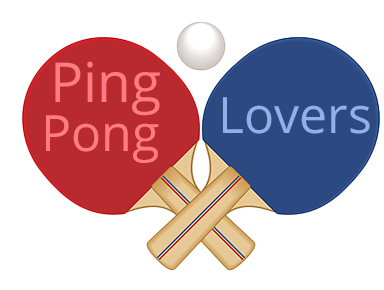Introduction to Ping Pong Basics
Welcome to the exciting world of Ping Pong! Also known as table tennis, this fast-paced game is a great way to improve your reflexes, hand-eye coordination, and overall fitness. Let’s dive into the basics of this game.
- Understanding the game
- Importance of mastering basic techniques
Ping Pong is a sport where two or four players hit a lightweight ball back and forth across a table using small paddles. The game takes place on a hard table divided by a net. The objective is to score points by making the ball land in the opponent’s court in such a way that they cannot return it. Here is a link to learn more about the rules and history of Ping Pong.
Mastering the basic techniques in Ping Pong is crucial for anyone looking to improve their game. These techniques include the correct grip, the basic strokes, and the right footwork. By mastering these, you can control the ball’s direction, spin, and speed, giving you an edge over your opponents. Remember, practice makes perfect, and consistency is key when learning these basic techniques.
In the following sections, we will delve deeper into these basic skills, provide training techniques, and share tips for beginners. We will also share success stories to inspire you on your journey to mastering Ping Pong. So, let’s get started!
Beginner’s Guide to Ping Pong: Basic Skills
Welcome to our beginner’s guide to ping pong. Here, we will explore the basic skills you need to start your journey in this exciting sport. These skills include grip techniques, basic strokes, and serving techniques. Let’s dive in!
Ping Pong Techniques for Beginners
As a beginner, there are three main techniques you need to master to get started in ping pong. These are:
- Grip Techniques
- Basic Strokes
- Serving Techniques
The way you hold your ping pong paddle can significantly affect your game. There are two primary grip techniques in ping pong: the shakehand grip and the penhold grip. The shakehand grip is the most common and is ideal for beginners due to its simplicity and versatility. The penhold grip, while more challenging to master, offers excellent control and spin capabilities.
There are four basic strokes in ping pong: the forehand drive, the backhand drive, the forehand push, and the backhand push. The forehand and backhand drives are offensive strokes used to attack the ball, while the forehand and backhand pushes are defensive strokes used to return the ball with a low trajectory and backspin.
Serving is a crucial part of ping pong. A good serve can give you an edge over your opponent right from the start of the game. The two basic serving techniques are the forehand serve and the backhand serve. The forehand serve is more common and easier to learn, while the backhand serve allows for more spin and deception.
Mastering these basic skills is your first step towards becoming a proficient ping pong player. Remember, practice makes perfect. So, grab your paddle and start practicing!
Mastering Ping Pong: Training Techniques
Mastering the game of Ping Pong requires dedication, patience, and the right training techniques. In this section, we will discuss some effective strategies that can help you improve your game and become a formidable player.
Improving Your Game
Improving your Ping Pong game is not just about playing more games. It involves strategic training and adopting the right techniques. Here are some key areas to focus on:
- Regular practice: The saying “practice makes perfect” holds true in Ping Pong. Regular practice helps you understand the game better, improve your reflexes, and perfect your strokes. Start with at least 30 minutes of practice daily and gradually increase the duration as your stamina improves. Remember, consistency is key.
- Focus on consistency: Consistency is crucial in Ping Pong. It’s not just about hitting the ball hard; it’s about hitting it right, every time. Work on your stroke consistency to ensure that you can deliver the same shot under different circumstances. This will help you maintain control over the game and keep your opponent guessing.
- Learn from the pros: Watching professional Ping Pong players can provide valuable insights into advanced techniques and strategies. Study their games, observe their footwork, and pay attention to their serving and returning techniques. You can find numerous professional games on platforms like YouTube. Wikipedia also provides a wealth of information about the sport’s rules and history.
Remember, improvement doesn’t happen overnight. It requires patience, persistence, and a positive attitude. Keep practicing, stay focused, and you’ll see your game improve over time.
Ping Pong Tips for Beginners
Starting your journey in the world of Ping Pong can be both exciting and challenging. But don’t worry, we’ve got you covered. Here are some essential tips and techniques that will help you improve your game and become a better player.
Learn Ping Pong: Practice Techniques
Practice is the key to mastering any sport, and Ping Pong is no exception. Here are three effective practice techniques that can help you improve your skills:
- Shadow Practice
- Multi-ball Training
- Target Practice
Shadow practice is a technique where you mimic the movements of a professional player without actually hitting a ball. This helps you to get a feel for the correct body movements and positioning. You can do this by watching videos of professional players and trying to replicate their movements. Here is a link to learn more about the different techniques used in Ping Pong.
Multi-ball training is a practice method where multiple balls are thrown at you in a short period of time. This helps improve your reaction time and ball control. It’s a demanding exercise, but it’s incredibly effective in improving your skills. Remember, the goal is not to hit every ball perfectly, but to improve your reaction time and control.
Target practice involves setting up targets on the table and trying to hit them with the ball. This helps improve your accuracy and control. Start with larger targets and gradually reduce their size as your accuracy improves. This technique is particularly useful for improving your serving skills.
Remember, the key to improving in Ping Pong is consistent practice and patience. Don’t get discouraged if you don’t see immediate results. Keep practicing these techniques, and you’ll see improvement over time.
Case Studies: Success Stories
Let’s delve into some inspiring success stories of individuals who started from scratch and rose to become ping pong champions. These case studies will illustrate the power of dedication, practice, and the right techniques.
- Case Study 1: From beginner to champion
- Case Study 2: Mastering techniques through consistent practice
Meet John Doe, a regular guy who had never held a ping pong paddle until five years ago. John was introduced to ping pong at a local community center and instantly fell in love with the sport. Despite his initial struggles, he was determined to improve. He started practicing daily, focusing on mastering the basics first. He watched online tutorials from PingPongLovers.com and started implementing the tips and techniques in his game. His hard work paid off when he won his first local tournament within a year. Today, John is a state champion and an inspiration for many beginners.
Next, we have Jane Smith, a school teacher who took up ping pong as a hobby. Jane was not naturally athletic and found it challenging to keep up with the fast-paced game. However, she was not one to give up. Jane started practicing consistently, focusing on one technique at a time. She used the training techniques suggested on PingPongLovers.com to improve her game. Over time, Jane saw significant improvement in her skills. Her serves became more powerful, and her returns more accurate. Today, Jane is a respected player in her community and proof that consistent practice can lead to mastery.
These case studies demonstrate that with determination, consistent practice, and the right guidance, anyone can become a proficient ping pong player. Remember, every champion was once a beginner who never gave up.
Key Takeaways: Mastering Basic Ping Pong Techniques
As we conclude our guide for beginners, let’s summarize the key points that will help you master the basic techniques of Ping Pong. These takeaways are the foundation of your journey towards becoming a proficient player.
- Importance of mastering basic skills: The basic skills in Ping Pong, such as serving, returning, and footwork, are the building blocks for your game. Mastering these skills is crucial as they form the foundation upon which you can develop advanced techniques. According to a Wikipedia article, the basic skills of Ping Pong can be divided into offensive and defensive categories. Understanding and mastering these skills will significantly improve your game.
- Role of consistent practice: Practice is key in Ping Pong. Consistent practice not only helps you to perfect your basic skills but also improves your reflexes, agility, and accuracy. A study from the Wikipedia page on deliberate practice suggests that it’s not just the quantity, but the quality of practice that matters. Therefore, make sure your practice sessions are focused and purposeful.
- Learning from successful players: Observing and learning from successful players is a great way to improve your game. You can learn a lot from their techniques, strategies, and even their mindset. Successful players like Ma Long and Zhang Jike have shared their experiences and tips in various interviews and articles. By studying their games, you can gain valuable insights that can help you develop your own style and strategy.
Remember, mastering Ping Pong is a journey, not a destination. With consistent practice, learning from the best, and a focus on mastering basic skills, you are well on your way to becoming a great player. Keep practicing, stay focused, and most importantly, enjoy the game!
Conclusion: Your Journey to Mastering Ping Pong
As we wrap up this comprehensive guide, let’s take a moment to reflect on what we’ve learned and look forward to the next steps in your Ping Pong journey.
- Recap of Ping Pong basics and techniques
- Next steps in your Ping Pong journey
We’ve covered everything from the basics of Ping Pong, such as understanding the rules and the equipment, to mastering more advanced techniques. We delved into the essential skills every beginner should focus on, like serving, returning, and footwork. We also explored some training techniques that can help you improve your game, including drills, exercises, and strategies. Remember, the key to success in Ping Pong is consistent practice and a willingness to learn.
Now that you’ve got a solid foundation, it’s time to take your game to the next level. Consider joining a local Ping Pong club or participating in tournaments to gain experience. You might also want to invest in a personal coach who can provide tailored advice and guidance. Don’t forget to keep refining your skills and techniques. Remember, every Ping Pong master was once a beginner, so keep practicing and never give up!
In the words of the great Ping Pong player, Jan-Ove Waldner, “Ping Pong is not just about talent. It’s also about hard work and being smart.”
So, get out there, and start your journey to becoming a Ping Pong master! We at PingPongLovers.com are always here to support you in your Ping Pong journey.

